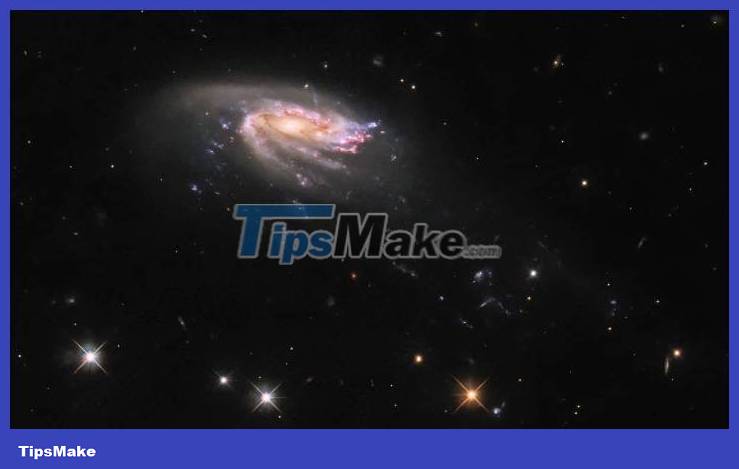Admire the image of the strange jellyfish galaxy through the eyes of the Hubble telescope
NASA/ESA's Hubble Space Telescope continues to show its importance in the field of astronomical research, bringing to humanity a one-of-a-kind image of a galaxy with an extremely unusual shape just like its name: The Jellyfish Galaxy.
The jellyfish galaxy JO206 is at the center of a stunning new image captured by Hubble's Wide Field Camera 3 system. Located 700 million light-years from Earth in the constellation Aquarius, JO206 is still visible with the intense light at the center of the galaxy, along with the long veins it extends to the lower right, indicating regions of strong interaction. These same veins are what give the galaxy its unique shape, reminiscent of a giant jellyfish floating in the depths of space.

In theory, when a galaxy passes through a galaxy cluster, it not only moves through empty space. It also glides through clouds of diffused plasma gas, known as the medium inside the cluster, which is hotter than the surrounding space outside the cluster. As the galaxy moves through this medium, it creates drag that pushes gas out of the galaxy and forms long 'tails' that run behind the main body of the galaxy - the jellyfish's tentacles.
In the past, Hubble has also photographed a number of other jellyfish galaxies, such as JO201 and JW100. This space telescope is often used to study jellyfish galaxies in general because the rate of star formation in their tails is so high, and astronomers want to understand how star formation differs when it occurs far from the center of a galaxy. But it turns out the process seems to be very similar, whether it happens at the center of the jellyfish galaxy or at the edge of its tail (tentacles).
You should read it
- Lonely star glitters in the background of an amorphous galaxy in the eyes of the Hubble telescope
- Detecting UGC 2885, a giant spiral galaxy, 2.5 times larger than the Milky Way galaxy
- Cluster of galaxies so large that it can skew space-time and bend light
- Galaxy S11 5G officially appeared on Geekbench with impressive specifications
- How to fix Samsung Galaxy S8 to restart automatically
- Shocking discovery in astronomy: 3 supermassive black holes in the same galaxy
 Elements of the universe
Elements of the universe Virgin Galactic aircraft carrying passengers to space successfully 'travels'
Virgin Galactic aircraft carrying passengers to space successfully 'travels' Admire the 'very different' image of Saturn under the eyes of the Hubble telescope
Admire the 'very different' image of Saturn under the eyes of the Hubble telescope Detecting an active supermassive black hole at an unprecedented distance
Detecting an active supermassive black hole at an unprecedented distance Admire the magical beauty of the Rho Ophiuchi star system through the eyes of the James Webb . telescope
Admire the magical beauty of the Rho Ophiuchi star system through the eyes of the James Webb . telescope ESA's new weather satellite sends back images of Earth with impressive detail
ESA's new weather satellite sends back images of Earth with impressive detail